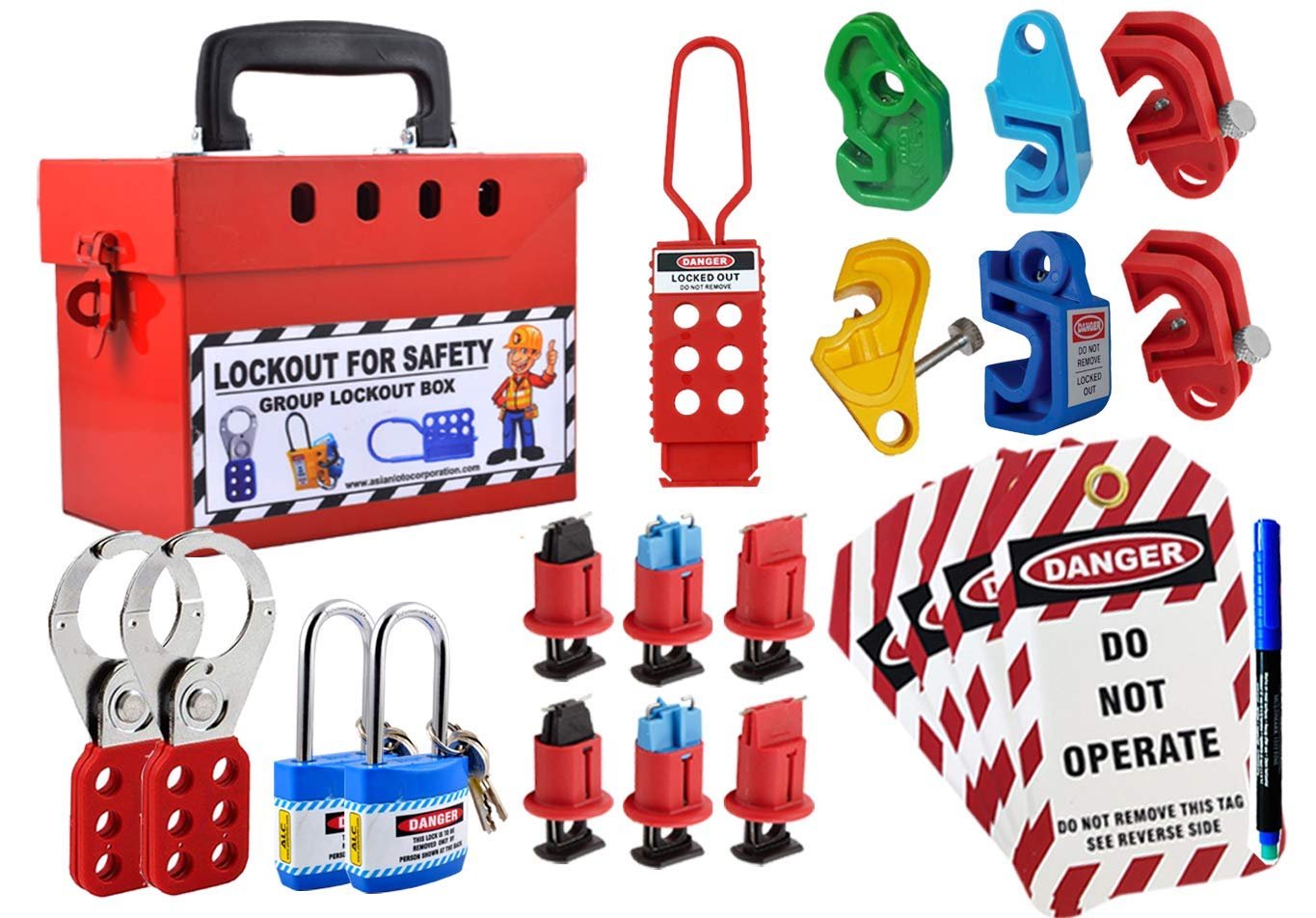- Remove another worker’s lock unless the worker is completely unavailable and then only remove the lock after a qualified supervisor has verified that it is safe to remove the lock and authorized the removal. Many companies have different procedures including completely refuse to remove other’s lock.
- Forgetting personal lock after shift or work hours creates the problem and shuts down the production in excessive amount. Reminder or checklist may exist before leaving workplace area.
- Only tagging on switch source is not enough. It should be locked to prevent someone switches the equipment accidently and create hard barrier. Who knows, someone might switches the equipment because doesn’t recognize the tag “Do not operate”.
- Unlabeled locks and tags...? Big problem. You know how to fight with it.
- Company should provide proper isolation points. Employees face challenges such as no locking or tagging points, improper design of equipment.
- Untrained or inexperienced employees sometimes put their tags on inappropriate places such as on driving wheel, panel hood or light switch...
- Assume that a closing and locking a valve is sufficient to prevent flow. The pipe must also be blinded.
- Assume that a piece of equipment has only one electrical source. Often, equipment has two or more – all must be locked out.
- Verify that the residual and stored energy has been released. Remember – Lock Out, Tag Out, and then Try Out. Make sure that you’re not surprised by residual energy.
- Sometimes LOTO might seem inconvenient, for example if you need to have parts of a machine or process energized for troubleshooting. In such cases, lock out the process completely, determine which lock-outs need to be removed to do the energized tests, evaluate the potential hazards carefully, and take the appropriate precautions. Only then remove the lock-outs. As soon as the need for the equipment to be energized has passed, the process should be locked out again.
- Hurry up and be late - It’s especially tempting to forgo re-locking the system when the job is almost done.
- Not all sources of hazardous energy are where you’d expect - Keep in mind that LOTO applies to all kinds of hazardous energy. Remember to look for the obvious – and the not-so-obvious. LOTO would have prevented several light trucks from being flattened at one Each time, maintenance workers neglected to lock out a large excavation vehicle. Fortunately, the trucks were unoccupied. In the slow-moving excavation vehicles, the maintenance workers were unaware that they had driven over the trucks.
- Lock-out and tag-out equipment that is out-of-service - LOTO is particularly important when removing defective equipment from service. Lock out and tag out defective and unused equipment until it can be removed or replaced. If you fail to do this, you could repeat one of the following accidents:
- A worker was electrocuted when he activated a defective, out-of-service electromagnet
- One pump of a two-parallel arrangement was out of service but not locked out. Workers, switched to the out of service pump as part of a routine rotation. This resulted in a major process upset costing millions of dollars. Luckily, no one was injured.
- Lock-out requires a lock - Finally, never rely on an interlock for LOTO. Make sure you positively lock out all the sources of hazardous energy.
- Don’t forget to consider corporate standards as well as national and local requirements for LOTO. In the United States, OSHA regulations on LOTO are very specific. However, some state regulations may have additional requirements. In Canada, LOTO is covered by various Provincial regulations that vary somewhat. In Germany, only licensed engineers are permitted to lock and unlock electrical equipment. Become familiar with your national, regional, and local requirements and implement higher standard which is better. Different understanding or experience related to LOTO system may cause problem.
-----------------------------
Ganjiguur Bukhbat
TheSafetyPoster.com






